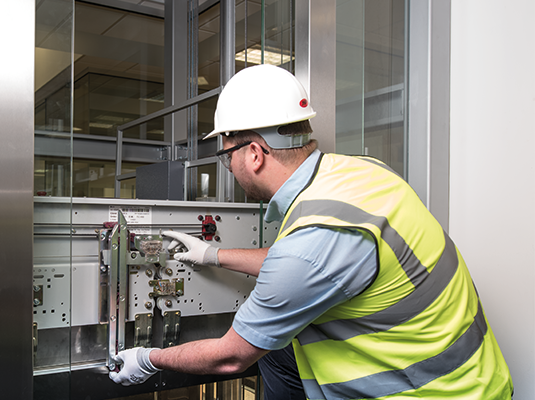Comprehending System Lift Dimensions: Important for Effective Lift Service
Comprehending System Lift Dimensions: Important for Effective Lift Service
Blog Article
An Extensive Method to Enhancing Efficiency Via Strategic Lift Fixing Strategies
A organized and strategic strategy to lift repair work and maintenance is important to make the most of efficiency and reduce downtime. By attending to usual lift concerns, executing aggressive upkeep steps, and creating targeted repair strategies, centers can optimize their lift systems to operate at peak performance degrees.
Significance of Lift Efficiency Optimization
Understanding the importance of enhancing lift efficiency is critical for making sure effective and trusted vertical transportation systems in various buildings and structures. Lifts are crucial components of modern infrastructure, offering vertical flexibility for owners and products within buildings of differing elevations. By enhancing lift efficiency, building proprietors and center managers can enhance customer experience, improve power effectiveness, and boost total operational performance.
Reliable lift performance optimization entails various factors, consisting of speed, capability, power upkeep, usage, and security requirements. Properly optimized lifts can minimize wait times for individuals, particularly in high-traffic structures, leading to improved fulfillment and productivity. In addition, optimized lifts add to energy financial savings by making use of sophisticated control systems and innovations that lessen power consumption without compromising efficiency.

Identifying Common Lift Issues
Determining typical lift problems is important for keeping the functional effectiveness and safety of upright transport systems in structures. This issue can be a sign of issues with the lift's electric motor, control system, or even the alignment of the lift cars and truck.
An additional widespread lift problem is weird sounds originating from the lift shaft or equipment area. These sounds can range from grinding or scraping sounds to loud clunking noises, all of which may signal underlying mechanical issues that require immediate interest. Furthermore, regular door breakdowns, such as doors closed or shutting appropriately, can disrupt the smooth flow of passengers and pose safety and security risks.
Implementing Proactive Upkeep Measures
To optimize the performance and durability of lift systems, aggressive maintenance steps play an essential function in making sure functional dependability and safety and security. lift breakdown. Implementing positive maintenance entails methodically checking, maintenance, and fixing components before they fail, thus preventing costly downtime and potential security risks. Regularly set up inspections can aid determine small problems before they rise into significant issues, eventually prolonging the life expectancy of lift systems
One key aspect of proactive upkeep is producing a comprehensive maintenance routine based on supplier referrals and industry ideal methods. This schedule must outline tasks such as lubrication, placement checks, and part replacements at defined intervals. Additionally, carrying out problem tracking techniques, such as resonance analysis and thermal imaging, can help find very early indicators of wear or breakdown.
Additionally, training upkeep personnel on proper inspection methods and precautionary upkeep procedures is vital for the successful execution of aggressive upkeep actions. By fostering a society of positive upkeep within an organization, lift systems can run at peak performance levels, decreasing disruptions and ensuring the security of customers.
Establishing Targeted Repair Service Strategies
Upon assessing the maintenance documents and efficiency data, the design team can establish targeted fixing strategies to enhance and address certain issues lift system functionality. These repair strategies are customized to the recognized problems, making certain that resources are concentrated on fixing vital concerns efficiently. By prioritizing repairs based upon their influence on efficiency and safety and security, the targeted fixing strategies help reduce downtime and maintenance expenses while maximizing the lift system's reliability.
Developing these strategies entails a detailed analysis of the lift system parts, including motors, cable televisions, brakes, and control systems. With this comprehensive analysis, the design group can figure out the root causes of any type of breakdowns or destruction in efficiency. This info is then utilized you can try these out to produce a roadmap for the repair procedure, laying out the required actions, timeline, resource and resources called for to resolve each issue efficiently.
In addition, targeted repair plans may consist of preventative steps to boost the lift system's longevity and efficiency. By proactively addressing potential problems before they intensify, these plans add to the general performance and safety of the lift system.
Making Use Of Data-Driven Insights
Harnessing the power of data-driven insights is essential in optimizing lift system performance and upkeep effectiveness. These anticipating maintenance strategies assist protect against unexpected malfunctions, reduce downtime, and expand the life-span of lift systems.

Final Thought
Finally, enhancing lift efficiency is important for making sure performance and safety and security in structures. By determining usual lift problems, implementing aggressive upkeep steps, establishing targeted repair work plans, and utilizing data-driven understandings, companies can improve efficiency and reduce downtime. It is essential to take a detailed technique to lift repair approaches to make best use of functional efficiency and ensure the durability of lift systems.
By attending to usual lift problems, carrying out aggressive maintenance measures, hop over to here and establishing targeted repair strategies, centers can enhance their lift systems to run at peak efficiency levels.One more prevalent lift problem is weird noises originating from the lift shaft or machinery area.Upon evaluating the upkeep documents and efficiency information, the design group can establish targeted repair service strategies to deal with certain problems and optimize lift system performance. By prioritizing fixings based on their influence on efficiency and safety and security, the targeted repair strategies help reduce downtime and maintenance costs while making the most of the lift system's integrity.
It is crucial to take a detailed method to raise repair service strategies to maximize operational performance and guarantee the long life of lift systems.
Report this page